books
Harboiled & Hard Luck - 04.12.24

At first, the title of this book reminded me of Haruki Murakami's Hard-Boiled Wonderland and the End of the World, which introduced me to Japanese literature a few years ago. I find they have a similar style of storytelling, the fantastic that sometimes borders on the strange or creepy. This book is a smooth read, two stories that, if I had to choose one word to describe them, it would be 'grief'.
The focus on the character's mourning is present in both stories - the first about the protagonist's girlfriend who has already died but continues to haunt her, and the second about a woman coming to terms with the reality that her sister is dying and that there's nothing that can help her. The contrast between grief over a dead and a living person is very interesting, and it shows how different people can react to death, as sudden as it was written by Yoshimoto.
The book centers itself more on the character's monologues than on the action scenes, becoming introspective and philosophical at times. There are things you have to accept that you won't understand, that are simply unusual, like Chizuru's obsession with cleaning and her ability to see ghosts. The protagonist's relationship with her feels like a broken puzzle piece that they both tried to fit together, something held together with tape that was seconds away from falling apart. I wonder if the hiker was a better person, if her life wasn't so affected by her relationship with her mother, if they could have worked it out.
At the farewell, I didn't understand what Chizuru meant by living a 'hard-boiled life', just the general idea of it - being indifferent to other people's opinions. But I really like the supernatural aspect of it, and how it is treated as mundane by everyone. The whole hotel scene and the hiker's encounter with the suicidal ghost seems to me to be a bit of a reflection of her own life.
Eventually the narrator finds peace in accepting her sister's death:
It's also about tragic romance - meeting the right person at the wrong time. It teaches patience, not to rush things when everything is so new and fragile. Let time heal.
movies
Captain America: Brave New World - 03.03.25

I did not like this movie at all. Saturated with military propaganda and lazy writing, it doesn't even have any great action scenes to accompany the simplistic plot. The fact that people do terrible things and only get a slap on the wrist made me incredulous - this film does a terrible job of showing redemption arcs, if you can call them that. I also found the antagonist to be very weak and one-dimensional and we don't even care about the people he kills - there is a random collection of new characters all of whom get zero character development. Even Bucky appears for like, two minutes, just to give Sam a pep talk and then vanishes. Perhaps we can blame all these problems on two things: the genre and the audience. However, just because a film is about fighting doesn't mean it doesn't need a story; and just because a film is made for kids/teens doesn't mean we should dumb it down to the point of stupid jokes and a story worse than a common fairy tale (not that fairy tales are dumb. They are just, mostly, simple).
I honestly didn't get anything out of it other than maybe political figures will be corrupt, but we still have to follow and obey them. To be frank, I thought the young man would be a traitor or something - at least that would have made the whole thing more interesting.
Gladiator II - 02.01.25

I watched the first Gladiator movie a long time ago, but it was very impactful because I can remember the scenes to this day, years later. The sequence begins much like the first one - a man who becomes a slave of the empire, has his family decimated and is put to fight in the coliseum.
In my humble opinion, they could have changed course with this movie and made it more interesting. I thought it was very repetitive and the only scene I found surprising was the one with the sharks and the naval fight - because it was absurd. My father and I laughed a lot at that, but it wasn't a movie that was meant to be a comedy.
I liked how they changed the serious nature of the emperors a bit to something more crazy, but they were very weak and it fell short in the end. I think if they'd made a sequel that didn't focus on Lucius it would have been a better movie - if they'd spent more time on the narrative and not the usual you are just like your father plot.
Dreams - 18.05.24

In May, Dad and I watched Akira Kurosawa's film Dreams. Usually, I'm not one to like movies, or going to the cinema, because I almost always end up feeling like I have wasted precious time, specially when I start early and finish it at noon. But, I liked it a lot - it was certainly very different from any western modern media that I see being popular today - it was more like Miyazaki's pieces, in the way that explored themes like Japanese mythology, nature, war and art.
I think my favorite moments were:
Spoilers
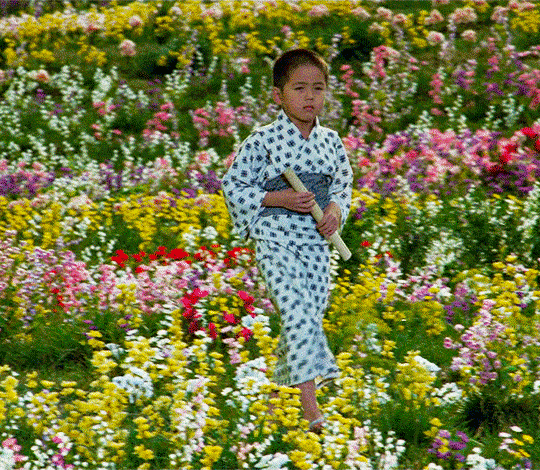
"Sunshine Through the Rain" we do not know if the boy received the kitsune's forgivness or if he had to commit suicide. I think that the fact that the mother kicked him out of the house made it seem, at the same time, more realistic and more fantastical.
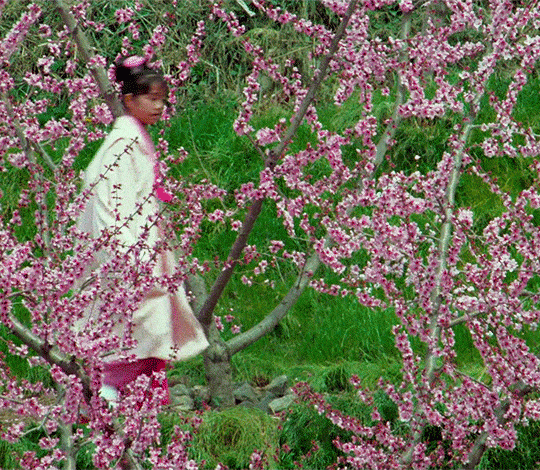
"The Peach Orchard" also stood out to me because I've been reading works regarding japanese tree yoikai, so it was very cool to see how they would look visually, without descriptions.
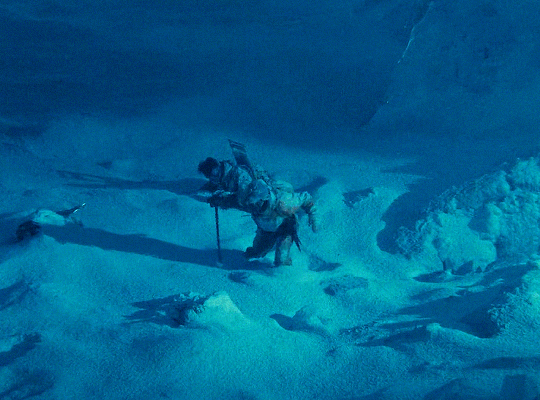
"The Blizzard" was a brilliant move and carefully crafted. The way the sounds of harsh breathing drag longer than you'd expect and the visual impairement makes you feel uneasy, unlike modern day filming who focuses on the actors more than in the nature of the scene. It's like you are there with them, and the despair seems to choke you from the screen. I was surprised by the happy ending, but as Kurosawa said before: "Even in tragic stories, there should be some happy parts."
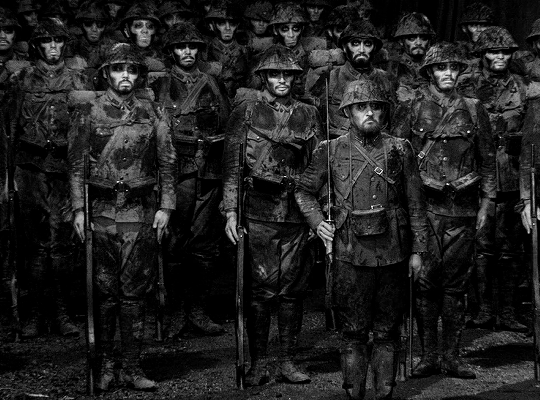
"The Tunnel" was one of those media moments that nests in your heart for you to remember for a long while. The way the soldier wanted to go back home, the dog with the weaponry, the revelation that only the commander survive from a huge platoon, when he cries, whising he could have gone with them...it was very unsettling. I loved

"Crows", and I guess Van Gogh would have love it too. It was a beautiful show of surrealism and impressionist art. When he entered the first frame I was spechlees by the dedication put on having the setting to be so perfect, I felt I was inside them too!
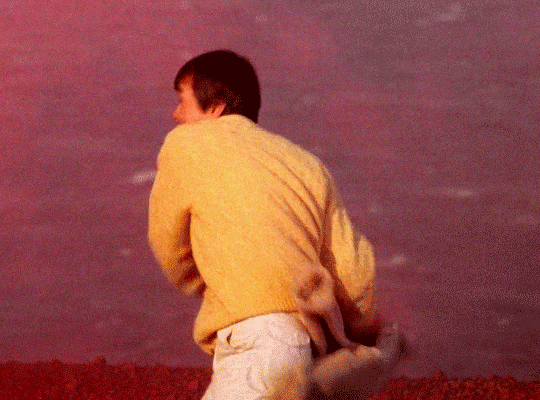
"Mount Fuji in Red" was that type of dream you get in the night when you wake up from a nightmare with sweat all over your body - like when imagining a zombie apocalise. I think the worst part is the truthfulness of it, and the way they had to abide their deaths, beacuse there was no fight to battle over - the enemy had alredy won.
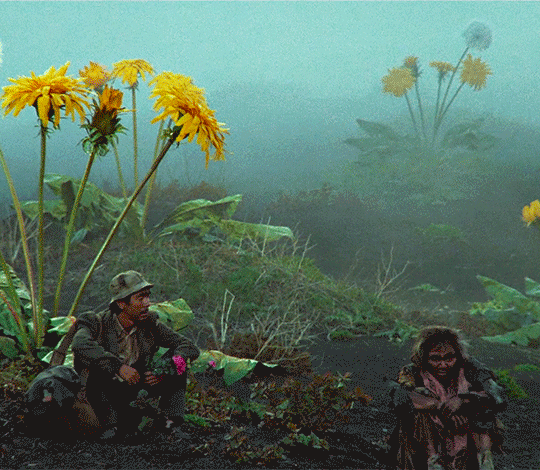
"The Weeping Demon" show us the aftermath of the last dream, and the future that await us. The way society still has its power even during th end of times was a topic that stuck with me - demons with 2 or 3 horns were on the top of the food chain, and were important people while humans, that is why they eat the weak and lower demons.

Admist all of this suffering, "Village of the Watermills" gives us hope. If we can work towards embracing nature again, perhaps what happened during the previous nightmares won't befall on us. All throughout the movie I felt that Kurosawa captured exactly the reality of a dream, - the boldness you get from being asleep, the fear of it being real, the calm and acceptance that drugs your body... At least it's how I saw it.
People go on about how hard life is, but that's just a lot of talk. Honestly, it's good to be alive. It's quite exciting.
- Dreams, 1990 dir. by Akira Kurosawa
Wolverine & Deadpool - 02.10.24

Honestly, the only scene that really stood out to me was the openning - the fight after Wade unsucessfully tries to recover Logan's body - because of the choreography and the song. I felt that, despite the rating and promisse of dark imagery both on the premisse and the trailer, the movie failed to deliver a deep narrative that could've debated strong topics and more serious dialogue.
Maybe I just wish it was a bit more dark, without missing the comedic value.
This is a recurring frustration of mine when I watch the recent Marvel and Super-Hero themed movies -
it seems as if they catter to much to the young audience, consequently dumbing down the story with flat jokes and uncompelling characters - like 'Thor: Love and Thunder', which was a painfull experience.
The quality of the prodution of movies has, somewhat, declined for the past years - at least when we talk about big names like Disney and Netflix.
Of course, we can still find amazing works nowadays, but I think that the audience has stabilished a new low on what is acceptable regarding effort and quality of media.
Take for example the new Live Action adaptations of classics recently, 'The Little Mermaid' and now 'Snow-white'. Not to say that they were all bad or that they are just lazy forms of gaining money, but...they kind of are. I really liked the 'Cinderella' adaptaion when I was a kid, because it was something new and exciting, though, after you see the same thing happening to all of the movies you have already seen before, it just feels repetitive and uninspiring.
That's why I am focusing now on non-western media, to see if I can find some diversity in terms of content and new narratives.
Want To
Oyasumi, Punpun

A coming-of-age drama story, it follows the life of a child named Onodera Punpun, from his elementary school years to his early 20s, as he copes with his dysfunctional family, love life, friends, life goals and hyperactive mind, while occasionally focusing on the lives and struggles of his schoolmates and family.
Oyasumi, Punpun is the classic work not to be judged by its cover, or after reading only a few pages. In fact the mascot-like appearance of the protagonist, is nothing but a smokescreen. Asano himself confirms it: I wanted [to] take the readers coming to the book because they thought Punpun was cute, and upset them. (laugh) I wanted to say to the reader,
'Here's a different kind of manga. Look at what kind of depths of reality manga can plumb.'
- Asano Inio
This statement reflects upon Oyasumi, Punpun' solid and monochromatic embossed covers. The first volumes, focusing on Punpun's childhood, ae vivid and bright colours; the subsequent ones progressively lose saturation, until they reach the two last tankobon, the penultimate completely black and the last one completely white. As if the author wanted to represent the downfallen spiral path of depression in which Punpun tumbles throughout the story.
By Vieilocean's [Analysis] Oyasumi, Punpun - Goodnight, Punpun



